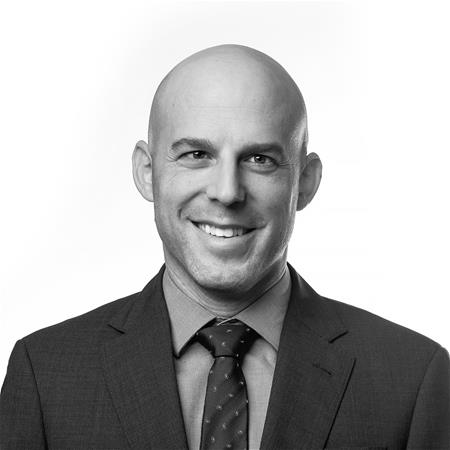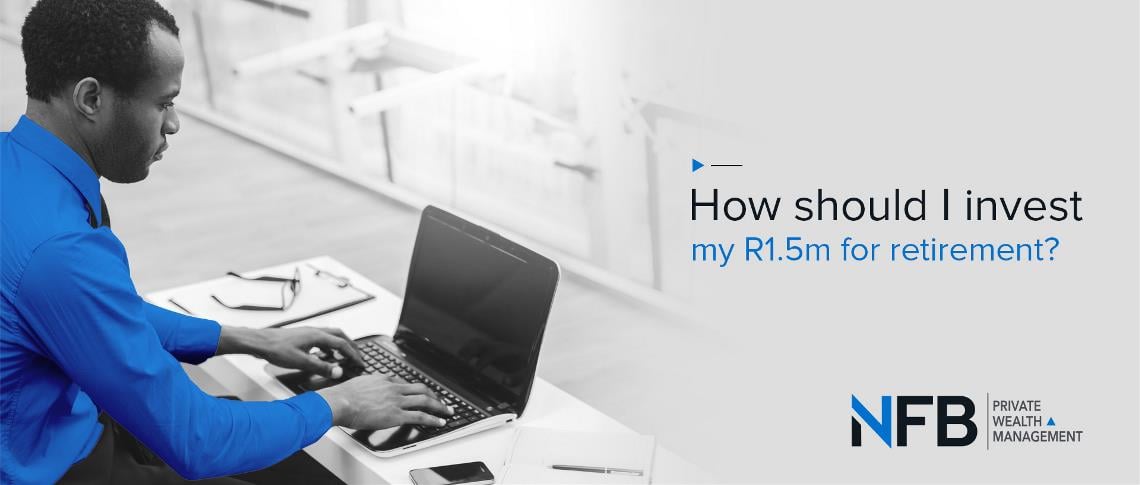How should I invest my R1.5m for retirement?
A question asked by one of our readers...


Q: I am 40 years old and have R1.5 million that I would like to invest for retirement. What kind of investment would you recommend? I’d like to keep fund costs as low as possible, and gain maximum returns with minimum tax implications.
Please note the information provided below does not constitute financial advice. Generic information has been applied in the context of your question. We have very limited detail about you and your circumstances, such detail may impact any advice provided.
Saving for retirement can incorporate a variety of products beyond retirement-specific products. We would suggest considering the following products:
Retirement annuity (RA)
- Contributions are tax deductible, limited to 27.5% of the greater of remuneration or taxable income, capped at an annual limit of R350 000
- Growth within the RA is taxed at 0%
- Your asset allocation must be in accordance with Regulation 28 guidelines
- There’s no estate duty or executor fees
- You’re limited to taking up to one third in cash at retirement (minimum age 55) which is taxed based on the retirement lump sum benefits tax table
- The balance at retirement, after any withdrawal, is used to purchase an annuity
Tax-free saving account (TFSA)
- Maximum contribution of R33 000 per year, with a lifetime limit of R500 000. Contributions to TFSAs which exceed the applicable annual or lifetime limits will be taxed at 40%
- Growth and withdrawals are tax free
- Estate duty and executor fees are applicable
- There is no limit to the amount an investor can withdraw from their TFSA and all withdrawals are tax free However, any re-investments will be regarded as new contributions and added to the existing contributions to calculate the total contribution limits
- Broad range of investment options
Unit trusts
- Both income tax and capital gains tax (CGT) are payable at the investor’s marginal rate
- CGT is paid on disposal or deemed disposal of units
- Income tax is paid on interest earned by the investor in excess of interest exemption
- Foreign dividends are taxed at 20%, unless eliminated or reduced in terms of a double-tax-agreement
- They are liquid
- There’s a very broad range of investment options
- Estate duty and executor fees are applicable
Endowment
- Tax is paid within the product at 30% income tax and 12% CGT. Withdrawals from the policy are not subject to further tax
- Liquidity is limited in the first five years to one loan and a surrender capped at capital invested plus 5% simple interest per annum. There is full liquidity once the product has run its term
- There’s a very broad range of investments
- Estate duty is applicable
- There are no executors fees if a beneficiary, other than your estate, is nominated
Please note the attributes ascribed to the products above are not exhaustive.
Your blend of products should support your investment objectives whilst taking into account tax and liquidity. You can hopefully see that each product has its own advantages and disadvantages and it most often works best incorporating more than one product.
It is important to have a blend of both tax-efficient and liquid assets in a portfolio. The decision to invest in a unit trust or via an endowment, for a long-term investment, comes down to your average tax rate and whether it is above or below the 30% levied in an endowment.
The one ‘product’ I haven’t included above, but that certainly deserves attention, is an equity portfolio. The broad treatment is the same as I described under ‘unit trusts’. You are also able to hold an equity portfolio in an RA or an endowment.
Now that we have covered products we can move on to discussing the underlying investments – the ‘stuff’ that is going to generate the returns over time.
Quick aside, if you don’t already have an emergency reserve you should consider holding onto a bit of your capital to cover this base, possibly in a call account, to avoid dipping into your long-term assets if something unexpected crops up.
You have a long time until retirement, assuming you retire at 65, and are thus able to take on reasonable equity risk. Common practice, which I agree with, says you should have around 75%, or more, of your portfolio in equity and somewhere between 25% and 50% in global assets. These allocations need to be considered along with:
- Personal propensity for risk
- Any short- to medium-term liquidity requirements
- Other assets you may have as well as those of your spouse if you are married
The last point we need to cover is costs. There are three costs that you may need to consider. Those of the:
1. Financial advisor
2. Product
3. Fund management
While costs can be a sensitive topic, the bottom line is that you need to understand what you are paying, and to whom.
1. Different financial advisors have different fee structures. You should be made aware of this, and all other costs, before investing your money.
2. If you end up using a product like an RA, the actual product provider is likely to charge a fee. As the product provider does all the administration, the fund manager can often offer a cheaper fund class than going direct to the asset manager, often offsetting most or all of the product fee.
3. Fund management costs can vary due to management style, such as active- or passively-managed assets, as well as the fund’s fee structure being a flat or performance-related fee. It is possible to find active management with good performance and cost efficiency.
Of all the decisions to make, your asset allocation decision is the most important. Fees are of course critically important, as your return is reduced by costs. Personally, I do not believe that doing things on your own and only using passive funds is the panacea. You should have a blend of management styles in your portfolio. Using a good advisor can add great value to long-term results and cost management.
To end off, I did a rough calculation to see what your sustainable drawing at retirement could be if you wanted to, at a minimum, maintain the real value of your income and capital. The assumptions are:
- You retire at age 65
- Have a 10% net return
- Your income in retirement increases at 7% per annum
The outcomes are:
- At retirement age your capital would be worth R3 396 289 in real terms or R18 085 418 in nominal terms
- Your sustainable income is around R4 000 per month in real terms, or R21 710 in nominal terms.
If you were not worried about drawing into or depleting your capital your sustainable income would be quite a bit higher. Either way it is scary how much you need to save to retire somewhat comfortably.
Good luck!













